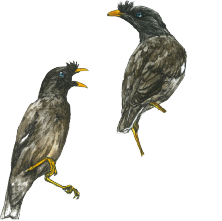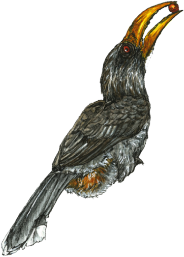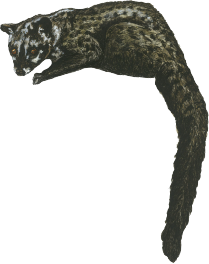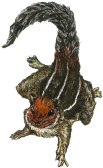Note: Best viewed on desktop/laptops. Not compatible with mobile/tablets.
How often do we look up at canopies? Or up at all. Do you remember the last time you stepped out of your house and looked up (and really looked, this is not about your cursory glance to curse the sun)? In forests or even in cities, our gaze is usually trained at eye level. The only time trees get our attention is when we sight birds. Even then, our focus remains on the creature’s flight, rather than the perch it was occupying.
Presenting the Fishtail Palm (Caryota urens), a flowering tree found in moist deciduous or evergreen forests in the Indian Subcontinent and Southeast Asia. It’s easy enough to identify this tree, in forests and cities by the inflorescences that produce a cluster of white flowers and red fruits. These trees flower throughout the year. The leaves are triangular and sharp, the edges earning them the name ‘fishtail’. The fruits contain sharp crystals that can cause irritation and chemical burns – urens actually means burning. This tree is a source of jaggery, toddy and palm wine. All the products from this tree have medicinal properties.
As you scroll down this illustration, the creatures that live within the canopies will present themselves one after the other, and what’s more, you can listen to them call so you know what to listen for when you’re in a forest or walking under city canopies. There are nine, so look for them all.
With this series, let’s encourage everyone to #LookUp. Send us photos on Instagram/FB/ Twitter with this hashtag whenever you see a canopy, and we’ll post it for you.
With inputs from Abhisheka Krishnagopal, Divya Mudappa and Karthikeyan Srinivasan.
Thank you for the music --
The audio of Bob Inger's Bush Frog - Ramya B, Seshadri KS, Ramit S and Gururaja KV. 2015. Mandookavani, Gubbi Labs LLP.
The audio of Jungle Striped Squirrel - Dilan Mandanna










